John Hurrell – 2 September, 2015
In the Colour Order series, he seems to be enjoying disrupting such sequences with pairs of darker and more strident strips - or single charcoal coloured bars. The double dominant bands are like narrow doorways or slots. They cut into the volumetrically bending forms, spatially breaking the tonally diminishing series and making a dark pathway through. The single ones, half as thick, emphasise their overlapping and bleeding righthand edges.
This collection of thirteen softly stained canvases from Simon Morris, one with five separate parts, present vertical bands that explore dilution, saturation and temperature, highlighting tonal gradation (its sequencing), edge manipulation (overlapping or butting / soft versus sharp) and paired chromatic chords. Though the show is about the materiality of paint, the suspension of pigment in fluid and what increasing that fluid does to the pigment and supporting canvas, the traces that it leaves - the show is also about vertical ‘musical’ harmonies and coloured or tonal juxtapositions.
Morris’s last show here emphasised gradations of desaturated hue, featuring smooth, regular transitions along the deintensifying bands, but in this one, in the Colour Order series, he seems to be enjoying disrupting such sequences with pairs of darker and more strident strips - or single charcoal coloured bars. The double dominant bands are like narrow doorways or slots. They cut into the volumetrically bending forms, spatially breaking the tonally diminishing series and making a dark pathway through. The single ones, half as thick, emphasise their overlapping and bleeding righthand edges. Some are surprisingly fuzzy, so that the blurry borders become a crucial (even independent) component; at times a separate, mid-tone, thinner band in their own right.
Others surprise with isolated bars of unexpected hot pink or tremulous but solid yellow. The chroma seems utterly indifferent to the pulsing juxtapositions on either side, a hovering vertical plank that advances towards you, fleeing the support.
The process Morris uses for the dilution of a series of bands on a canvas seems to involve cut out stencils for the vertical bands and X quantity of dark paint for the band on the far left, the same quantity of pigment within twice X amount of water for the second band, and the same quantity of paint with thrice X amount of water for the third, and so on.
Fascinatingly, despite the use of reason in the watering down process and mixing, it is still very hard to predict colour behaviour within the liquid paint - in terms of tonal or chromatic increments - for as it gets fainter and fainter it evens out, maximising the effects along the canvas, and stabilising, while wispy traces constantly remain along the edges. I suspect that this indeterminacy factor, the element of absolute control that remains just out of reach, is what fascinates Morris.
The five part work, Black Water Colour (Five Parts) plays on this, as does Grey Water Colour, a single, quite long, horizontal canvas. As noted above, the very diluted bands at the righthand end of both works especially intrigue. However, with the five part painting that has five canvases lined up and spaced apart, the tones match on each side of the five interrupting gaps, the righthand side of the lefthand canvases equalling the tones of the lefthand sides of the right.
This presentation has more of an unpredictability factor than Morris’s last Two Rooms exhibition. Overall it is less cool, not only in temperature of chroma, but in mindset and painting structure: less scientific. Both are joyous, but this is sexy and more overtly physical. Even impulsive (despite considering that indeterminacy factor I’ve mentioned). Not so icily cerebral and driven by logic.
John Hurrell

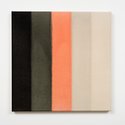
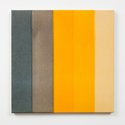
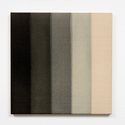
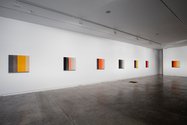
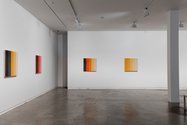
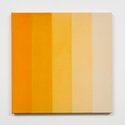
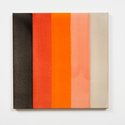
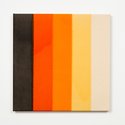
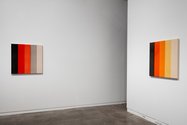
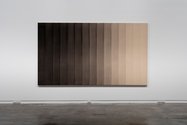
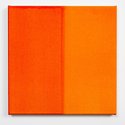
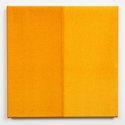
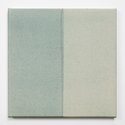
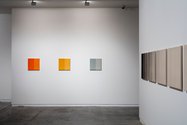
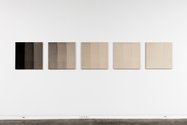
 Advertising in this column
Advertising in this column Two Rooms presents a program of residencies and projects
Two Rooms presents a program of residencies and projects



This Discussion has 0 comments.
Comment
Participate
Register to Participate.
Sign in
Sign in to an existing account.